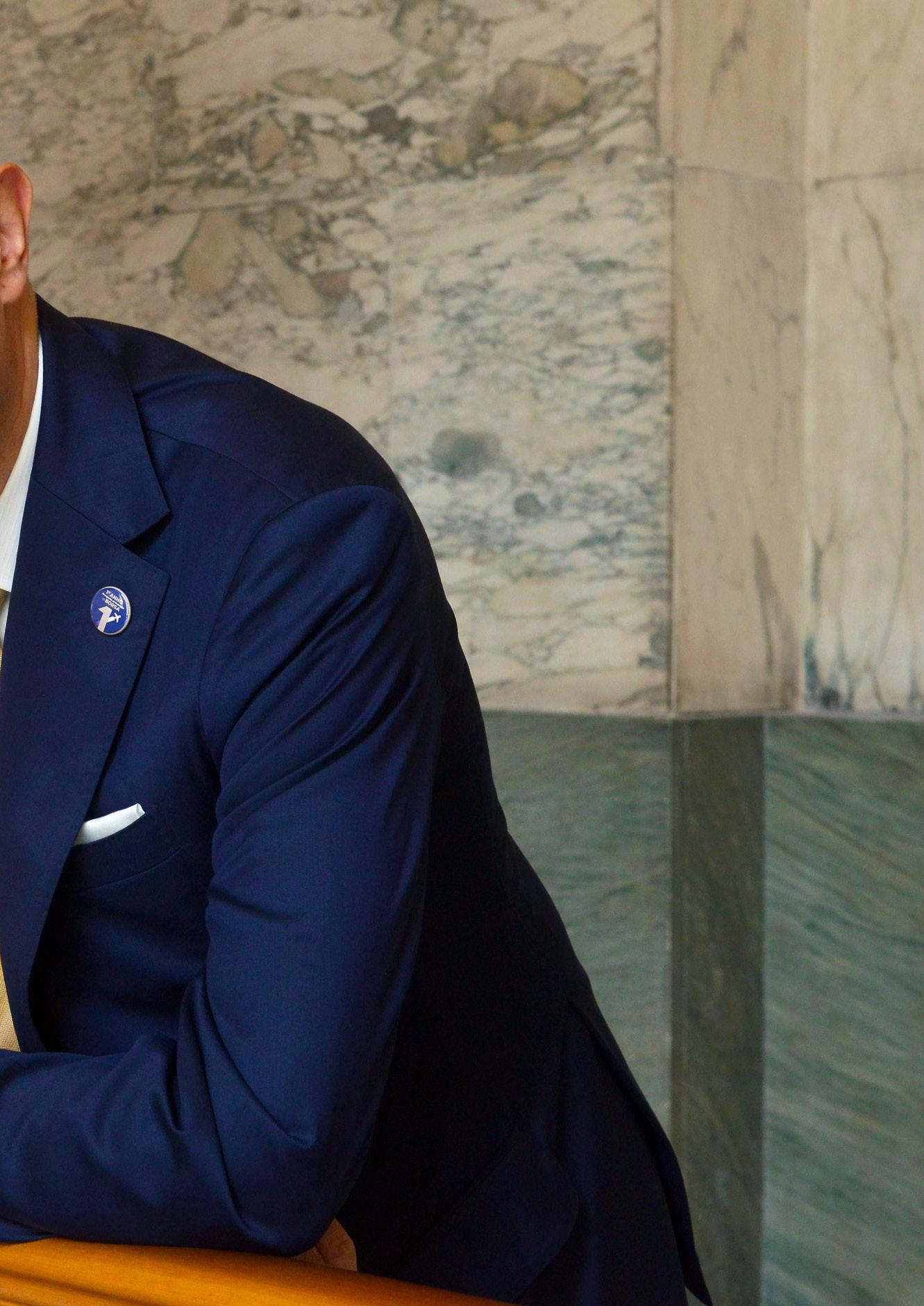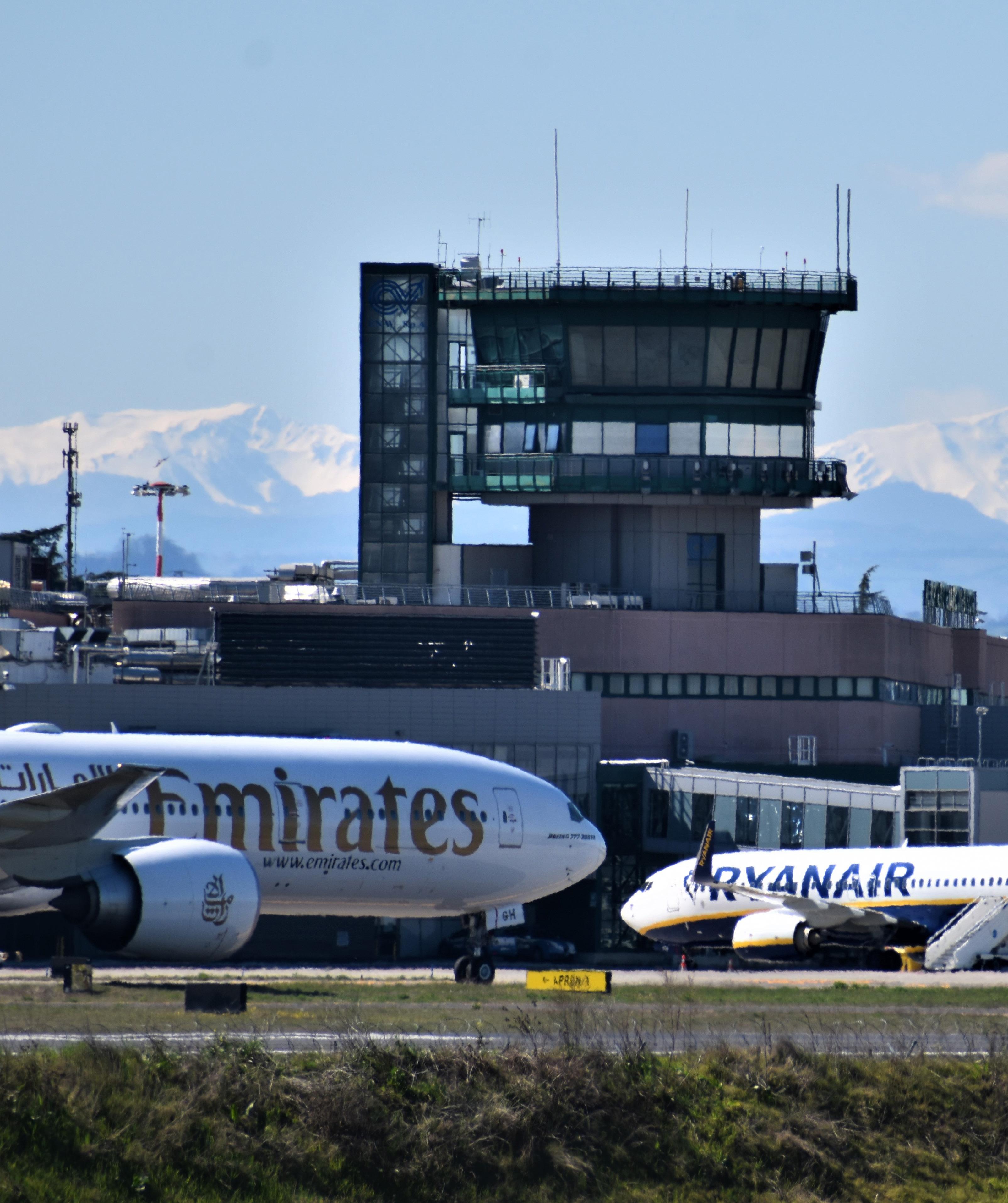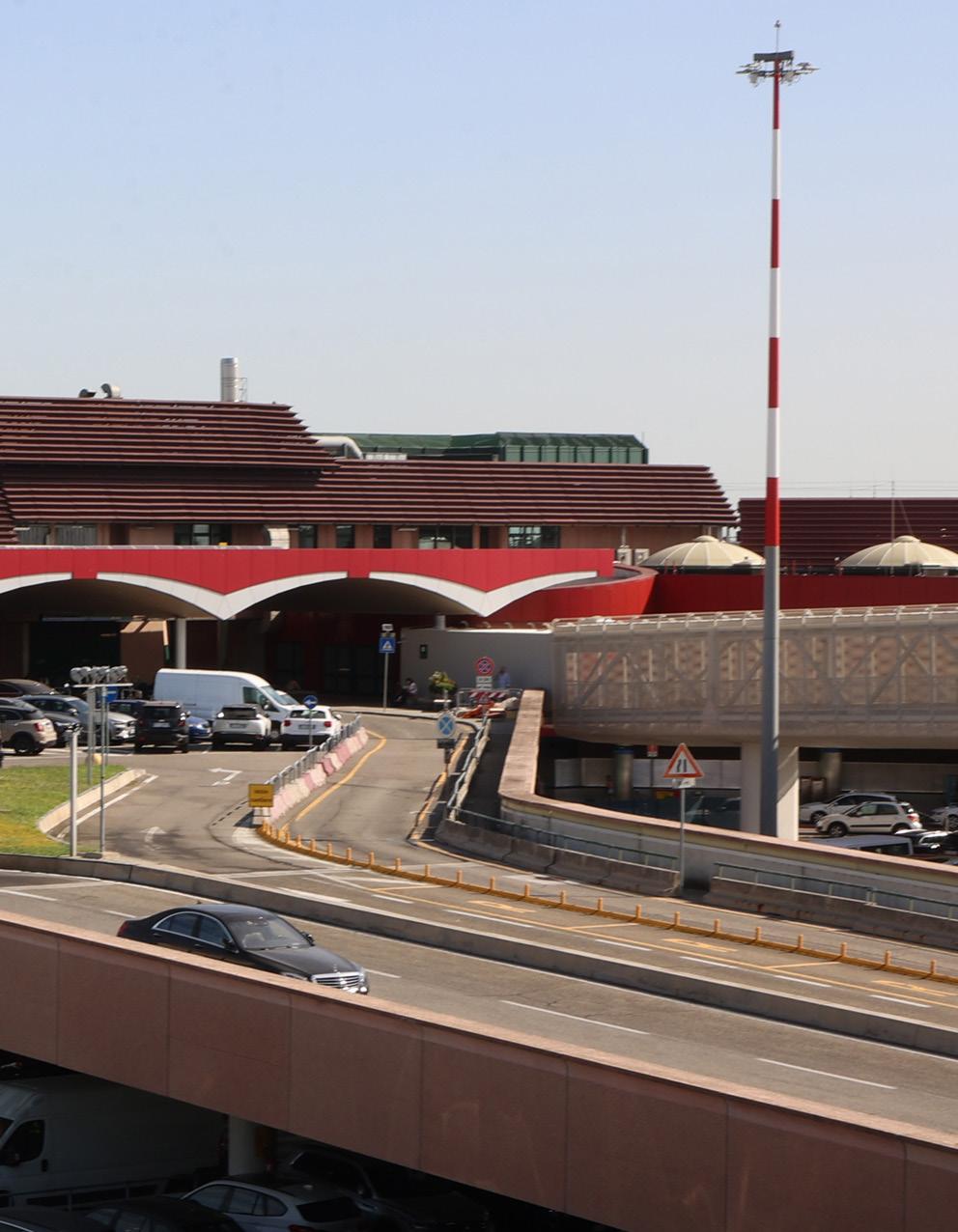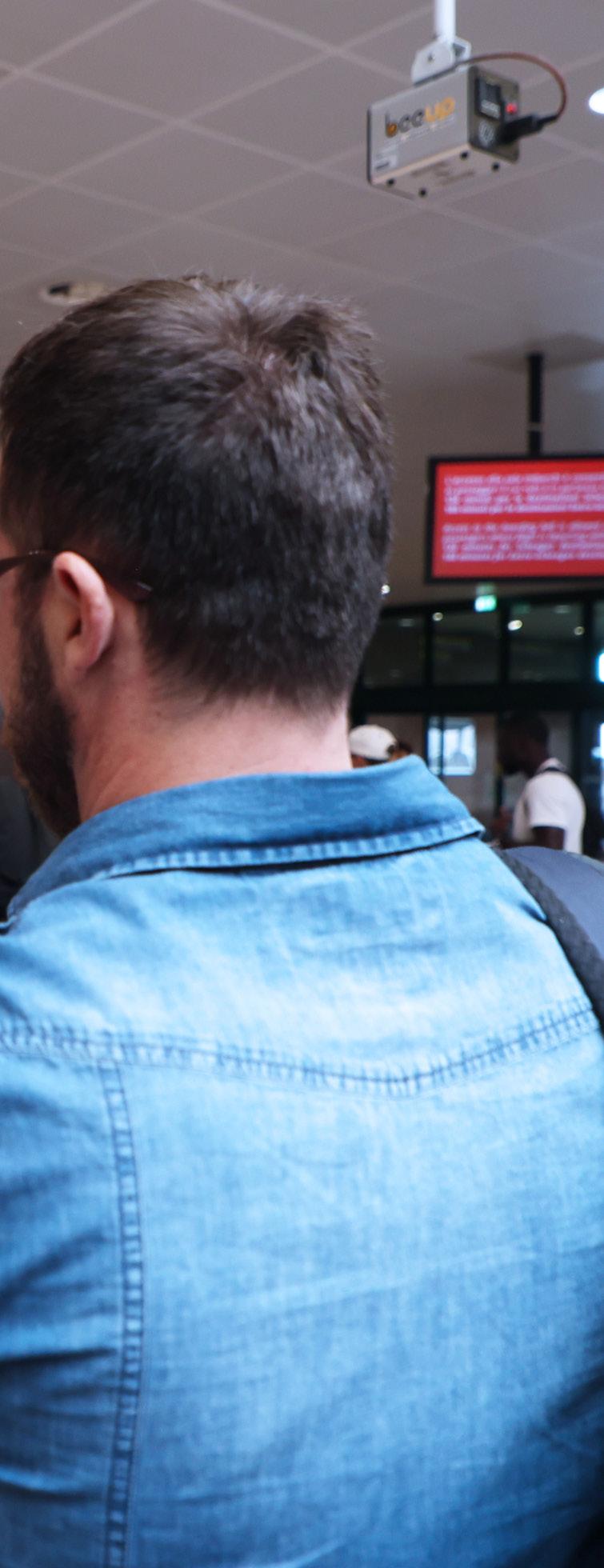REMOVING BOUNDARIES: HOW DIGITAL TRANSFORMATION IS TAKING OFF AT BOLOGNA AIRPORT

REMOVING BOUNDARIES: HOW DIGITAL TRANSFORMATION IS TAKING OFF AT BOLOGNA AIRPORT




Nazareno Ventola, CEO & Managing Director shares insights into the digitalisation, transformation and sustainability strategies at Bologna Airport.


Located in the heart of the Emilia-Romagna food valley and close to the packaging and automotive industrial districts, Bologna Airport has a vibrant catchment area of 11 million people and 47,000 businesses – with many of these companies having a strong focus on commercial expansion, exports and internationalisation. It is classified as a ‘strategic airport’ under Italy’s National Airports Plan and is well-situated in relation to the country’s highspeed rail and motorway networks.

Bologna Airport has recovered from the fallout
of the COVID-19 pandemic quicker and better than expected, partly due to its favourable location and the lucrative commercial catchment area its based in. However, the recovery isn’t down to geography alone.
Here to tell us more about the digital transformation and sustainability strategies at Bologna Airport which have helped it thrive in the past few years is Nazareno Ventola, CEO & Managing Director since 2015 when the airport was listed on the Italian stock exchange.
For Nazareno, Bologna Airport’s recovery since
the COVID-19 pandemic must be understood in the context of how digitalisation is transforming modern airports.
“In 2019, we reached our peak in terms of passenger traffic –9.5 million passengers,” begins Nazareno. “COVID-19 obviously had a huge impact, but our recovery has been quicker and better than expected – last year we welcomed 8.5 million passengers, and by the end of 2023 we expect to exceed the 2019 record.”

In the past four years, modern airports around the world have
had to embrace transformation and digitalisation, according to Nazareno.
“Transformation is happening for businesses in industries all over the world, and for airports one of the major changes is shifts for the passenger experience – there are no more boundaries between ‘on’ and ‘off’ the airport anymore,” explains Nazareno. “We’re connected, anytime, anywhere – before your journey and after your journey. You can access information about your destination and itinerary seamlessly, no matter where you are.
“It's an opportunity but it's also a challenge for airports. With the mobile revolution, people have access to so many services that they then expect the same when they are at the airport. These processes are lightning fast, which is difficult to replicate at an airport where there are procedures, security and safety protocols to follow.
“The level of attention and patience that people have has changed a lot over the last 20 years. This is reflected in the expectations of passengers at the airport. They want to be as autonomous as they can be, whether that

means self check-in or securing information about deals and the facilities available at the airport. Mobile phones have become an extension of our souls, of our minds. We can access information or compare and rate services, instantaneously. There are no more boundaries.
As an airport, we're in a situation where we have to be competitive not only with other airports, but also with off-airport services and experiences. That is why digital transformation is crucial.
“Ultimately, passengers want to be independent but they also want to feel that someone is caring for them. So the human touch shouldn't be lost and it's a balance between the fact that people are less patient, they want more, and they want to be independent, but at the same time they also want to have the human touch and they want to feel that they belong to
“ULTIMATELY, PASSENGERS WANT TO BE INDEPENDENT BUT THEY ALSO WANT TO FEEL THAT SOMEONE IS CARING FOR THEM”
something when they are at the airport.”
So what does the digital strategy look like at Bologna Airport?

Nazareno divides the approach into four pillars.
“The first pillar is development and optimisation of digital and physical infrastructure,” says Nazareno. “Both are connected. Digital infrastructure helps us better manage the physical infrastructure. For instance, we have technologies within the airport that help us with monitoring passenger flows through different areas of the airport. This information is important because it allows us to optimise our services, identify areas of improvement and refine
aspects like commercial offers or services for our passengers.
“The second pillar, which has grown in relevance in recent years, relates to the concept of security. Data protection, cybersecurity and online safety is a growing area of concern for companies in many different sectors all over the world. As an airport, the number of digital attacks that we had over the past few years has been increasing exponentially. We have to be very careful about how we manage our digital infrastructure, data and privacy policies. Of course, it was a concern in the past – but it has
“WE HAVE TECHNOLOGIES WITHIN THE AIRPORT THAT HELP US WITH MONITORING PASSENGER FLOWS THROUGH DIFFERENT AREAS OF THE AIRPORT”
become even more prevalent as a concern that permeates our entire company.
“Fortunately, we have been very well prepared, training staff to recognise threats. It's a never-ending battle, because cybercriminals always invent something new.
“Cybersecurity is closely related to the third pillar of our digital strategy – flexible and smart organisation in terms of how our staff do their job, the technology they use and how they are connected when they are not in the office. It might seem quite obvious now, but it wasn't so
obvious in the past. The COVID-19 pandemic was an accelerator for these dynamics, but we had to set up an organisation that was able to work remotely back in Spring 2020, in only a couple of weeks. It was quite difficult but, somehow, we succeeded and we learned a lot in the process.
“By the end of 2021, we saw that emergency was almost gone but we understood that these new ways of working were here to stay. Our colleagues asked for change, so they would be able to continue working remotely, and we adjusted our digital strategy accordingly. We invested in technology improvements in order to be able to communicate in a smart way.
“As a company, we decided to set up a working policy that guarantees most staff to have up to two days a week working at home, depending on their jobs. It has been very well accepted by our colleagues. There aren’t many airports that have decided to continue with these working arrangements and our digital strategy and technology is crucial to this.
“The fourth pillar of our digital strategy is a crossover between


technology and environment

and technological innovation. This is something which, of course, relates to our business strategy as a whole – where we have an environmental innovation plan in place which is deeply interlinked with our digital strategy. For us, fighting climate change means reducing our carbon footprint and monitoring our energy consumption to have realtime information, so we can adjust our consumption and infrastructure according to our actual needs, in order to save energy.
“Sustainability is deeply embedded into our business strategy. When we talk about sustainability, we follow and are inspired by the United Nations 2030 agenda. Of course, the environmental aspect is fundamentally important, but we also consider the social and the governance aspects as crucial too. In my mind, sustainability is like a table with three legs. You need all three legs for the table
to exist and stay standing. If you take away one of them, the table falls down. So they're equally important.
“In terms of environment, we have committed to the reach net zero by 2030 in terms of scope one and scope two emissions, which are the emissions directly related to airport activities. We are also engaged in looking at our scope three, which
Reimagine the passenger experience with SITA Smart Path - the air transport industry’s most comprehensive identity management solution for every step of the journey.
Empower your passengers to validate their identity using our award-winning SITA Smart Path TS6 Kiosks, securely enabled with facial biometrics recognition technology.

Transforming travel. Learn
relates to how our partners –mainly airlines – are managing their business.
“We are investing in energy generation with green technologies like photovoltaic power supply. We are in the feasibility study phase to install an up to 20 megawatts plant in the airport area by 2027-2028. This should be able to satisfy almost
“SITA IS A TERRIFIC EXAMPLE OF A PRODUCTIVE PARTNERSHIP. WE ARE WORKING WITH SITA ON THREE MAJOR INNOVATION PROJECTS”
50 per cent of our electrical needs and reduce our carbon footprint dramatically.
“In terms of the social side of sustainability, we are constantly developing our smart working policy so we can provide good working conditions for our people. We refined our welfare system, developed during COVID, and continue to expand its scope. We are very active in terms of striving for gender equality and we actually reached a gender gap that is positive for women – 0.6 per cent positive for women in 2022. But our efforts are not only limited to wages, our sense of responsibility stretches to diversity in terms of how we appoint managers and senior leadership roles where we have a healthy balance between men and women.
“Lastly, in terms of our sustainability efforts from an economic point of view, we are also working to progressively certify our business partners that have shops in the airport and our service providers, for them to be compliant and in line with the principles that we follow as a company and as a group. Bringing this together, we recently joined the United Nations Global Compact, which is a logical and
natural step on our path towards sustainability.”
Nazareno explains that partnerships are crucial to the four pillars of digital strategy at Bologna Airport and therefore the interlinked sustainability agenda, and the broader goals related to innovation, transformation, growth and operations at Bologna Airport.
“Partnerships are essential because we believe in open innovation, it is essential,” summarises Nazareno. “We cannot do anything fully by ourselves as we're not operating in a vacuum as a company. So we frequently develop innovation projects together with an external partner, and often they are leaders in their own industries.
“Sita is a terrific example of a productive partnership. We are working with Sita on three major innovation projects. The first is to develop a scan and fly project which relies on a self-service kiosk without an operator. We've also developed what we call ‘ABC Gates’ for passport control on arrival, with biometric technology for facial recognition. We’re also developing a messaging system
for delivering flight information to the passenger, and it also covers communications related to Lost and Found operations, in order to manage lost baggage.”
So what does the future hold for Bologna Airport and what can passengers expect in the coming years?
in the capex for a couple of years. When we started approaching normality again, the traffic came back even stronger than we expected. During peak days and times, the airport is too small for the passengers that we have in 2023. So now we need to rush and recover that lost time during the pandemic to accelerate our infrastructure development. Our terminal is our bottleneck at the moment, but we are already working on this and have plans in place to expand it in the next couple of years. So the look and feel of the airport, over the next three to five years will change for the better.”
Wrapping up our conversation, Nazareno is thrilled to share that in July 2023 Bologna Airport celebrated an historic milestone: for the first time, one million passengers crossed the airport’s threshold in a month.

“Infrastructure development and expansion is a key issue for us,” answers Nazareno. “We have been growing faster than our infrastructure over the last few years. Then we had the COVID-19 pandemic when, for survival reasons, we had to slow down
“We have never reached such a figure in the past, even at the previous peak in 2019,” beams Nazareno. “I honestly didn’t expect to reach these kinds of numbers only two years after the end of the pandemic.”
For further information about Bologna Airport, visit bologna-airport.it.

During the height of the COVID-19 pandemic, Nazareno read Antifragile: Things that Gain from Disorder by Nassim Nicholas Taleb and enthusiastically endorses the book.
“The concept of the book is how do we go beyond a traditional definition of resilience, a word we all used a lot during the pandemic,” summarises Nazareno. “Typically we understand resilience as returning to or recovering to the previous level after a major shock. To be antifragile is more than this, it means you learn from the shock and come back stronger, wiser and better than you were before.”
“The book inspired me tremendously during the dark days of the pandemic,” admits Nazareno. “In my role I had to motivate and help my colleagues to stay hopeful and strong in difficult times. The book made me see that no matter what happened we would emerge with a huge amount of experience that we could use as fuel to inspire us and overcome new challenges – we would be able to face anything. And I don’t just mean as an airport, but as people.”
Nazareno highlights the importance of leadership by living your role.
“How we act and live our role, in my case as a CEO but this applies to any type of management or leadership position, defines our success,” stresses Nazareno.
“The biggest danger that you can face is to be too focused on your role as representative of who you are. I always try to remind myself that, first of all, you are a person and then you have a role, not the other way around. As a leader or manager, the first task that you have is to help others do their job and make the working conditions the best they can possibly be. It's a mind shift away from being self-centred and always respecting that you are part of a larger picture. You are dot, sometimes a very important dot, but you are still a dot.”
Connect with Nazareno